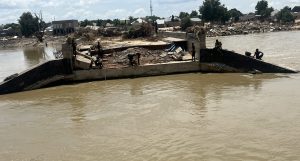US Air Force deploys B-52 bombers to Europe in message to Russia

A bomber task force of B-52 Stratofortresses, airmen and support equipment from the 2nd Bomb Wing based out of Barksdale Air Force Base, Louisiana, arrived at RAF Fairford late last week and has been participating in various training missions across Europe, according to the service. On Monday, four B-52s “conducted flights to several places in Europe, including to the Norwegian Sea, the Baltic Sea/Estonia and the Mediterranean Sea/Greece,” the Air Force said.B-52 bombers from Andersen Air Force Base, Guam, and RAF Fairford have also conducted “simultaneous theater familiarization training in the Indo-Pacific and Europe” as bombers “flew north to an area east of the Kamchatka Peninsula,” near Russia. “Collectively, the flights from the Indo-Pacific and Europe demonstrated US commitment to allies and partners through the global employment of military forces,” the Air Force said in a news release.Weighing 185,000 pounds, the B-52 first entered service in the 1950s during the height of the Cold War, originally designed to serve as long-range, high-altitude intercontinental nuclear bombers that could strike deep into the Soviet Union.The newest B-52 entered service in 1962, and the 159-foot plane became a Cold War icon.The planes have been modified heavily since the end of the Cold War and have been upgraded with precision-guided missiles, electronics and high-tech sensors. Each aircraft can carry up to 70,000 pounds of bombs, mines and missiles, according to the Air Force’s official fact sheet.Tension with MoscowTensions between the US and Russia have steadily increased in recent months following Russia’s seizure of Ukrainian ships and detention of Ukrainian sailors after a confrontation in the Kerch Strait in November.Russia’s actions and its detention of the Ukrainian sailors prompted President Donald Trump to cancel a planned meeting with Russian President Vladimir Putin during the G-20 summit in Argentina last year.Moscow has continued to ramp up its own military presence in the region, prompting the US to do the same.But the top US commander in the region says it doesn’t appear to be working.”I’m not comfortable yet with the deterrent posture that we have in Europe,” Gen. Curtis Scaparrotti said earlier this month, warning that his command faced shortfalls with regard to land and naval forces as well as intelligence, surveillance and reconnaissance assets.”Of concern is my intelligence, surveillance and reconnaissance capacity given that increasing and growing threat of Russia. I need more ISR,” he added.”In light of Russia’s modernizing and increasingly aggressive force posture EUCOM recommends augmenting our assigned and rotational forces to enhance our deterrence posture,” Scaparrotti said.This week, two Russian generals said Moscow plans to send nuclear-capable bombers and medium-range missiles to the peninsula — but quickly retracted their statements. Still, NATO lashed out at Russia for its “wide-ranging military buildup in Crimea” and the US National Security Council said Monday that Moscow’s annexation of Ukrainian territory “continues to pose a threat to our regional allies.”While Trump’s long-standing criticism of NATO over burden-sharing costs continues to hang over the 29-member military alliance, the US has increased its military presence in Europe during his administration as the US and Europe seek to counter Russia’s actions in the region.Trump has been reluctant to publicly criticize Russia throughout his time in office but the US Congress continues to introduce new sanctions and acts targeting Putin for various affronts, including the annexation of Crimea. But that has done little to deter Putin from insisting the Ukrainian territory rightfully belongs to Russia.Putin traveled to Crimea this week and rallied crowds by saying a new powerful Russia has emerged that will stand up for its interests. No military solutionUS Special Representative for Ukraine Kurt Volker said on Monday that “there is no military solution” through which Ukraine could reclaim Crimea.”That would be militarily a disaster. It would lead to the loss of thousands and thousands of lives. It’s not something anyone should be contemplating,” Volker said on the fifth anniversary of Russia’s annexation of Crimea.”So there’s no taking it back by force,” Volker said during a news briefing delivered by video feed from Brussels, Belgium.Volker said the US would be willing to provide additional arms sales “to help them develop a strong, capable, sustainable defense capability.” He said “it’s possible” that the US would provide more anti-tank systems as well as air and coastal defenses. On the possibility of Ukraine joining NATO in the near future, Volker said he couldn’t predict. He noted it depends on “how quickly Ukraine can progress” on such issues as standards of democracy, anti-corruption and civil control of the military, as well as when NATO decides the appropriate time for a formal invitation. Volker said he hoped Russia would not react strongly when that happens.Volker said the international community would continue to sanction Russia until Crimea was restored to Ukraine. He also deflected criticism that the West is culpable for the annexation, saying Russia was solely to blame”What we have is not a lack of an appropriate format. What we have is a lack of political will from Russia,” he noted of the political process.CNN’s Jennifer Hansler and Ryan Browne contributed to this report.







